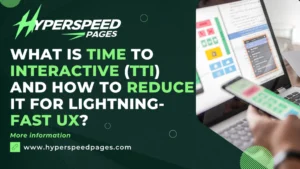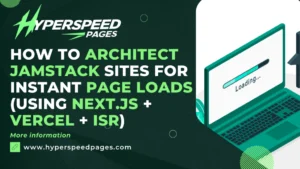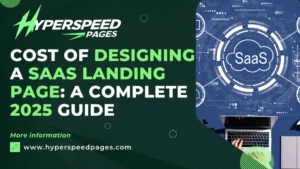
Designing an effective Amazon product landing page is a critical skill for sellers aiming to stand out in the highly competitive e-commerce landscape. With over 2.5 million active sellers and millions of products listed on Amazon as of 2025, optimizing your product page is no longer optional, it’s a necessity.
Whether you’re a seasoned Amazon FBA seller or a beginner launching your first private-label product, this article covers everything you need to know, from crafting compelling product titles to optimizing images and utilizing Enhanced Brand Content (EBC) or A+ Content.
What is an Amazon Product Landing Page?
An Amazon product landing page is the individual product detail page (PDP) that customers visit when browsing or clicking on an Amazon search result or external ad. It includes elements like the product title, images, bullet points, description, pricing, availability, and customer reviews.
This page serves as your digital storefront and must convey value, credibility, and differentiation in seconds.
Why Landing Page Design Matters
The layout and design of your Amazon landing page directly impact:
- Conversion Rate (CVR): Well-designed pages lead to higher sales.
- Search Ranking: Amazon’s A9 algorithm favors products with higher conversion and engagement.
- Brand Trust: High-quality content reinforces brand authority.
- Customer Retention: Good design fosters repeat purchases and positive reviews.
A poor design leads to high bounce rates, low sales velocity, and negative customer sentiment—all of which damage your organic visibility.
Mapping the Amazon Customer Journey
Understand how customers arrive at and interact with your PDP which is crucial for design:
- Discovery: Via Amazon Search, External Links, Ads (Sponsored Products/Brands/Display), or Browse Categories.
- SERP Evaluation: Customer scans search results (Main Image, Title, Price, Reviews, Badges like ‘Best Seller’). A compelling snippet earns the click.
- PDP Engagement: The critical phase. The customer evaluates Images, Videos, Title, Bullets, Price, Delivery Options, Q&A, Reviews, A+ Content, and Brand Story.
- Decision: Add to Cart, Buy Now, Save for Later, Compare, or Bounce.
- Post-Purchase: Review prompts, potential repeat purchases influenced by brand experience (partially set by the PDP).
Step 1: Amazon SEO & A10 Algorithm Optimization
Before designing your page, you must understand the backbone of Amazon’s ecosystem: the A10 algorithm. This search engine prioritizes:
- Relevance: Keywords in the title, bullet points, and description.
- Performance: Sales velocity, CTR, and conversion rates.
- Customer Satisfaction: Positive reviews, low return rates, and fast shipping (e.g., FBA).
Additionally, Amazon enforces strict content guidelines:
- No external links or promotional codes.
- Images must have a white background (for main images).
- No competitor mentions or unverified claims.
Pro Tip: Use Amazon’s Seller Central “Style Guide” to ensure compliance while maximizing creativity within the rules.
Step 2: Conduct Keyword Research for SEO Optimization
A high-ranking Amazon product page starts with keyword research. Amazon’s search bar operates like Google—customers type in queries, and the algorithm matches them to relevant listings. Here’s how to optimize:
Tools to Use
- Helium 10: Identify high-volume, low-competition keywords.
- Jungle Scout: Analyze competitor keyword strategies.
- Amazon Search Bar Autocomplete: Type your product category (e.g., “wireless earbuds”) and note suggested terms.
| Tool | Purpose |
| Helium 10 / Jungle Scout | Keyword research & listing optimization |
| Canva / Figma / Photoshop | Design A+ Content & infographics |
| FeedbackWhiz / Sellerboard | Review automation & analytics |
| Amazon Attribution | External traffic tracking |
| AMZSplit / PickFu | A/B test titles, thumbnails, etc. |
Keyword Strategy
- Primary Keyword: The main search term (e.g., “wireless earbuds noise-canceling”).
- Secondary Keywords: Related terms (e.g., “Bluetooth earphones,” “earbuds for workouts”).
- Long-Tail Keywords: Specific phrases (e.g., “best noise-canceling earbuds under $50”).
Where to Place Keywords
- Product Title: Front-load the primary keyword (e.g., “Noise-Canceling Wireless Earbuds – Bluetooth 5.3, 30-Hour Battery”).
- Bullet Points: Include secondary keywords naturally.
- Backend Keywords: Add hidden keywords in Seller Central (up to 250 bytes).
SEO Tip: Avoid keyword stuffing. Amazon penalizes over-optimization, and it alienates customers.
Step 3: Craft a Compelling Product Title
Your product title is the first thing customers see in search results. It must be concise (under 200 characters), keyword-rich, and persuasive. Follow this formula:
[Brand] + [Primary Keyword] + [Key Features/Benefits]
Example:
“SoundPeak Noise-Canceling Wireless Earbuds: Bluetooth 5.3, 30-Hour Battery, IPX7 Waterproof”
Best Practices
- Prioritize readability over cramming keywords.
- Highlight unique selling points (USPs) like “waterproof” or “fast charging.”
- Avoid all caps or excessive punctuation (e.g., “!!!”).
Step 4: Design High-Quality Product Images
Visuals are the cornerstone of your Amazon product landing page. Studies show that 93% of consumers consider images the most influential factor in purchase decisions (MDG Advertising, 2023). Here’s how to nail it:
Image Requirements
- Main Image: White background (RGB 255,255,255), 1000×1000 pixels minimum, product fills 85% of the frame.
- Supplementary Images: Up to 8 additional images (lifestyle shots, infographics, etc.).
Types of Images
- Hero Shot: Clean, professional main image.
- Lifestyle Images: Show the product in use (e.g., earbuds during a workout).
- Infographics: Highlight features (e.g., “30-Hour Battery Life” with an icon).
- Comparison Charts: Differentiate from competitors.
- Close-Ups: Showcase details (e.g., button placement).
Tools to Use
- Canva: Create infographics.
- Adobe Photoshop: Edit high-resolution images.
- Fiverr: Hire professional photographers or editors.
Step 5: Write Persuasive Bullet Points
The bullet points (under “Key Features”) are your elevator pitch. Amazon allows five bullets, each up to 1000 characters. Use them to:
- Address Pain Points: “Blocks 95% of ambient noise for uninterrupted focus.”
- Highlight Benefits: “Enjoy 30 hours of playtime on a single charge.”
- Incorporate Keywords: Naturally weave in secondary terms.
Example:
- Advanced Noise Cancellation: Experience crystal-clear audio with cutting-edge ANC technology, perfect for work, travel, or workouts.
- Long-Lasting Battery: Get 30 hours of playback and fast charging (5 minutes = 1 hour).
- IPX7 Waterproof: Sweat-proof and rain-resistant, ideal for active lifestyles.
Pro Tip: Use bold formatting (via HTML in Enhanced Brand Content) to emphasize key phrases.
Step 6: Optimize the Product Description
The product description appears lower on the page and is your chance to tell a story. For Enhanced Brand Content (EBC) or A+ Content (available to Brand Registry sellers), you can add visuals and formatted text.
Structure
- Introduction: Hook the reader (e.g., “Say goodbye to distractions with SoundPeak earbuds”).
- Features Breakdown: Expand on bullet points with details.
- Call to Action: “Add to cart now for premium sound at an unbeatable price.”
Example A+ Content Layout
- Module 1: Hero image + tagline.
- Module 2: Feature grid with icons (e.g., battery, waterproofing).
- Module 3: Lifestyle collage + customer testimonials.
SEO Tip: Include long-tail keywords naturally in the description.
Step 7: Leverage Enhanced Brand Content (EBC) or A+ Content
For registered brands, EBC/A+ Content elevates your listing with rich media. Benefits include:
- 3-10% higher conversion rates (Amazon data).
- Improved storytelling and branding.
Design Tips
- Use a consistent color scheme aligned with your brand.
- Add comparison tables to showcase superiority over competitors.
- Include a FAQ section to preempt customer questions.
Step 8: Encourage Reviews and Q&A Engagement
Customer reviews and Q&A sections influence 70% of purchase decisions (BrightLocal, 2024). While you can’t control reviews, you can:
- Request Reviews: Use Amazon’s “Request a Review” feature post-purchase.
- Answer Questions: Respond promptly in the Q&A section to build trust.
- Trustworthiness Tip: Never fake reviews. Amazon’s AI detects fraud, and penalties are severe.
Step 9: Test and Iterate with Data
Post-launch, use analytics to refine your page:
- Amazon Brand Analytics: Track CTR and conversion rates.
- Split Testing: Experiment with titles, images, or pricing via Amazon’s “Manage Your Experiments.”
- Heatmaps: Tools like Helium 10’s “Audience” feature show where customers focus.
Common Mistakes to Avoid
- Keyword Stuffing: Harms readability and rankings.
- Low-Quality Images: Drives customers away.
- Ignoring Mobile Optimization: Over 60% of Amazon traffic is mobile (2024 data).
- Overcomplicating Design: Keep it clean and scannable.
Technical Best Practices for Amazon Landing Page Design
- Image File Size: Keep under 2 MB for fast loading.
- Image Naming: Use keyword-rich alt tags (Amazon doesn’t show them, but helps when used on off-Amazon pages).
- Tracking: Use Amazon Attribution Tags for off-site traffic.
- Split Testing: Use Manage Your Experiments (MYE) for A/B testing titles, images, and A+ modules.
Emerging Trends to Watch
- AI-generated titles and bullets with human supervision
- Voice and visual search optimization
- Interactive A++ content (pilot programs in beta)
- Video-first listing formats
- Hyper-personalized landing pages via DSP and retargeting
Key Takeaways
- Optimize titles & bullet points with keywords.
- Use high-quality images & videos.
- Leverage A+ Content for better conversions.
- Monitor & improve reviews & ratings.
- Avoid common listing mistakes.
Whether you’re launching a new product or optimizing an existing one, the techniques outlined above will position your listing for long-term success in the competitive Amazon marketplace.




